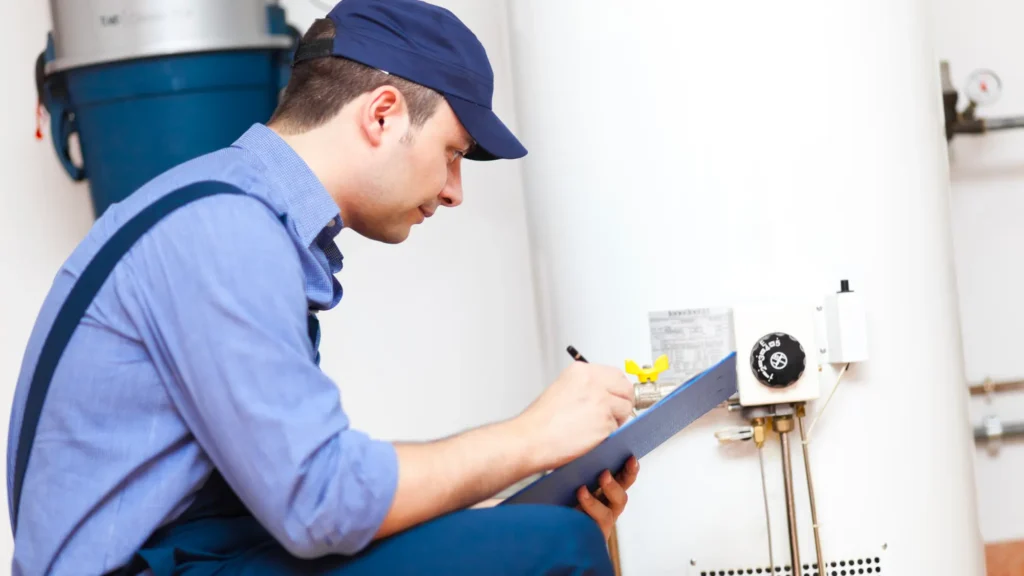
CMMS
Building Sustainability Into Facility Management

Sustainability is no longer an optional aspect of facility management—it’s a necessity. By implementing eco-conscious practices, facility managers meet ethical obligations to environmental conservation, and also attain operational benefits like cost reduction and increased efficiency.
To bring context to the importance of sustainability, this article discusses various strategies, metrics, and best practices.
Develop a Strategic Foundation for Sustainability
A comprehensive strategy is necessary to achieve sustainability in facility management, centered around:
- Minimizing environmental harm
- Conserving resources
- Ensuring continuous, long-term operation
For any organization, the key is to make smart choices in energy usage, waste management, water conservation, and other factors.
Identify Areas to Monitor and Manage
Identifying key areas for tracking and managing resources forms the foundation of any successful sustainability program. Here are some key considerations:
- Energy Consumption – Monitoring energy consumption helps set achievable reduction targets. Real-time data highlights inefficiencies, enabling immediate corrective actions that minimize both costs and environmental impact.
- Fuel Consumption – Often overlooked, fuel consumption significantly affects a facility’s carbon footprint. Precise tools assist in reducing emissions and managing costs effectively. Smart fuel tracking systems go beyond simple measurement to provide actionable insights for resource management.
- Refrigerant Usage – Proper handling of refrigerants is crucial, given their central role in HVAC systems, and the potential for environmental hazards. Through precise tracking and responsible disposal methods, facilities can reduce greenhouse gas emissions. Specialized management systems support this level of control.
From energy consumption to refrigerant usage, having the right data helps organizations make informed decisions for both their bottom line and the planet.
Managing Metrics: Governance, Systems & Solutions
Here, the focus shifts to the technology and systems that aid in effective metric tracking.
CMMS / Work Order Management
The Computerized Maintenance Management System (CMMS), also known as a Facility Management Platform, functions as a digital center for managing and tracking work orders. These platforms streamline workflow by simplifying task prioritization and resource allocation. In sustainability efforts, CMMS can also be configured to flag maintenance activities that can improve energy efficiency.
Refrigerant Management
Effective management of refrigerants is essential to comply with environmental regulations. Facilities must implement specialized systems to monitor refrigerant use, detect leaks, and adhere to legal standards. Considering some refrigerants can harm the atmosphere far more than CO2, it’s critical to keep them in check.. With new regulations on the horizon, these systems are necessary to help companies stay informed and ready to report, reducing the risk of fines and demonstrating a commitment to a cleaner environment.
Fuel Consumption/Mileage Tracking
For fleet and on-site assets, mileage and fuel consumption metrics are equally crucial. Specialized systems can provide comprehensive tracking, from basic consumption figures to advanced analytics. These insights further enable the adjustment of routes or equipment use to minimize fuel usage.
Electric Utility Reporting Platform
Advanced electric utility platforms can provide granular data on usage patterns, thus identifying opportunities for reduction and better cost management.
Partner with the Right Service Providers
When service providers align with established systems and objectives, the organization benefits in measurable ways. The following are key considerations:
- System Use – Compatibility with existing management systems is a must for any service provider. Such alignment is crucial for effective data collection and reporting on sustainability metrics.
- Field-Level Data Entry – Requiring service providers to input data at the field level is imperative. This level of detail in data collection allows for nuanced insights, which can lead to more effective sustainability practices.
- Review During Contract Events – Contract renewals or the issuing of requests for proposals (RFPs) are key moments for performance review. These evaluations serve as a mechanism for accountability and for refining sustainability goals going forward.
Choosing service providers who are committed to similar sustainability metrics improves the organization’s environmental performance. This ensures effective resource management and solidifies long-term commitment to eco-conscious practices and sustainable facilities.

Implement a Preventative Maintenance Plan
Regular, scheduled maintenance significantly improves how equipment functions, which in turn contributes to the overall sustainable operation of a facility.
Optimal Equipment Performance
Regular upkeep ensures that equipment runs at optimal levels, which directly correlates to less energy consumption and reduced carbon emissions.
Malfunctioning Equipment and Sustainability
A single malfunctioning piece of equipment can sabotage even the best-laid sustainability plans. Unexpected breakdowns often lead to emergency fixes that are both costly and energy-intensive. Thus, preventative maintenance acts as a safeguard against such setbacks.
Managing Energy and Extending Equipment Life
By ensuring that each component operates efficiently, maintenance activities contribute significantly to managing energy consumption. Regular upkeep also extends the life of the equipment, reducing the need for frequent replacements and lessening waste.
Involving Employees in Sustainability Efforts
Getting the entire team involved in sustainability initiatives can make a tremendous difference. One effective approach is to set up key performance indicators (KPIs) and dashboards that are visible across the organization. This allows all stakeholders to track performance metrics and keeps everyone accountable for sustainability goals.
In addition to KPIs, creating a competitive environment around sustainability can also be beneficial. Establishing a system of rewards and recognitions can encourage employees to actively participate in implementing sustainable practices. This not only engages the staff but also fosters a culture of responsibility and awareness about sustainability.
Performing Regular Audits for Sustainability
Regular audits contribute to the maintenance of sustainability targets in a facility. These audits offer an assessment tool for gauging the success of existing policies and identifying areas that need refinement. They provide critical data, helping facility managers allocate resources more efficiently.
Through audits, gaps in regulatory compliance or energy inefficiencies can be spotted. This practice upholds accountability and keeps the organization aligned with its sustainability objectives.

Gaining Support from C-Suite and Management
Involvement from C-Suite and management serves as an essential element for the success of a facility’s sustainability efforts. Their participation not only signifies commitment but also ensures allocation of necessary resources to implement sustainable practices.
When the leadership team is involved, strategic alignment becomes easier. This involvement ensures that sustainability is not just a segmented effort by facilities managers, but a company-wide initiative. High-level support empowers facility managers to implement changes effectively, thus achieving set sustainability goals more smoothly.
Taking a comprehensive approach to sustainable facility management ensures environmental benefits as well as operational efficiency and long-term viability. Actions taken today set the stage for a more sustainable and responsible future for facility management.



